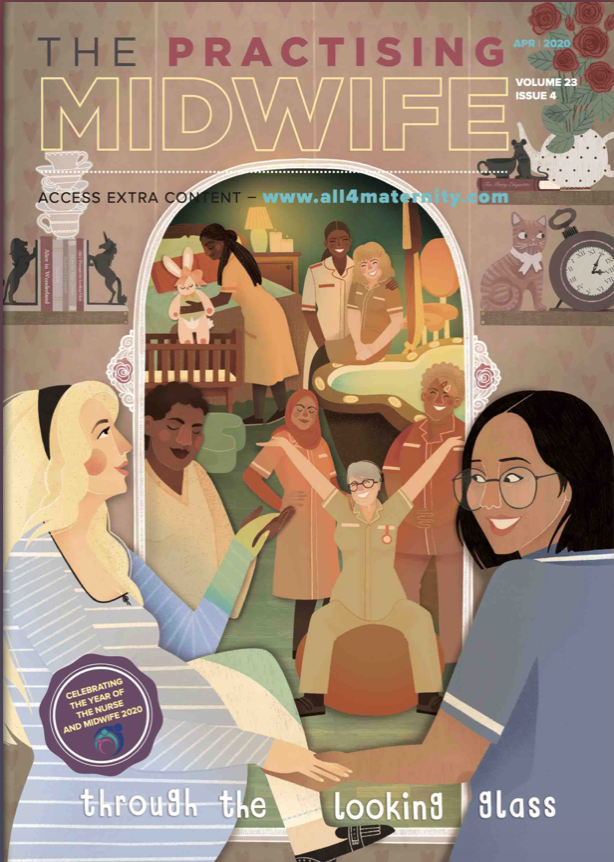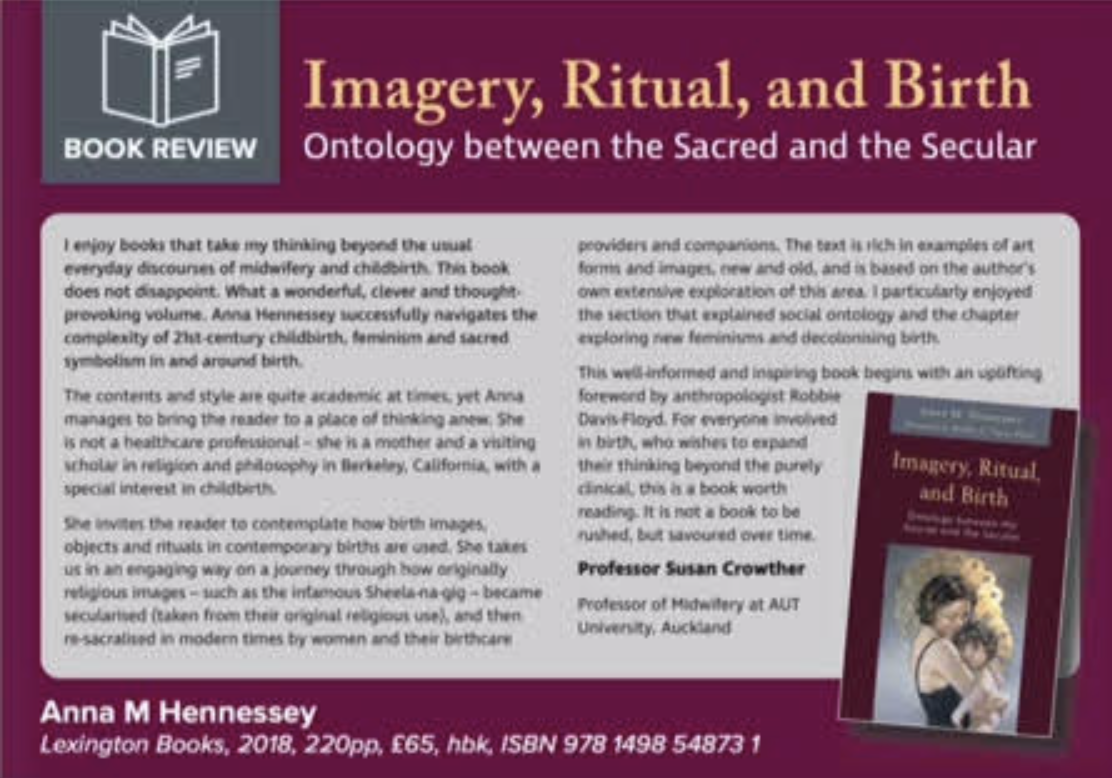April 2020 Review of “Imagery, Ritual, and Birth” in “The Practising Midwife”
I was honored to learn that the April 2020 edition of The Practising Midwife, an important magazine out of the United Kingdom and within the midwifery and birth communities, includes a beautiful review of my book, Imagery, Ritual, and Birth. The review is written by Dr. Susan Crowther, a professor of midwifery at AUT University in New Zealand.
The review is relevant to the Visualizing Birth community because Dr. Crowther describes the main thesis of the book, which relates to how imagery is used in birth as a rite of passage, a key point of the Visualizing Birth blog. She also mentions the Sheela-na-gig, an important object used in birth and discussed here in several posts, including: Calmness and Strength in the Birthing Figure of the Sheela-na-gig and Visualizing Birth through the Sheela-na-gig.
I am excited to share Dr. Crowther’s review here for the Visualizing Birth community!
Book Review of Imagery, Ritual, and Birth: Ontology Between the Sacred and the Secular in The Practising Midwife, April 2020 edition
I enjoy books that take my thinking beyond the usual everyday discourses of midwifery and childbirth. This book does not disappoint. What a wonderful, clever and thought-provoking volume. Anna Hennessey successfully navigates the complexity of 21st-century childbirth, feminism and sacred symbolism in and around birth.
The contents and style are quite academic at times, yet Anna manages to bring the reader to a place of thinking anew. She is not a healthcare professional–she is a mother and a visiting scholar in religion and philosophy in Berkeley, California, with a special interest in childbirth.
She invites the reader to contemplate how birth images, objects and rituals in contemporary births are used. She takes us in an engaging way on a journey through how originally religious images–such as the infamous Sheela-na-gig–became secularized (taken from their original religious use), and then re-sacralized in modern times by women and their birth care providers and companions. The text is rich in examples of art forms and images, new and old, and is based on the author’s own extensive exploration of this area. I particularly enjoyed the section that explained social ontology and the chapter exploring new feminisms and decolonizing birth.
This well-informed and inspiring book begins with an uplifting foreword by anthropologist Robbie Davis-Floyd. For everyone involved in birth, who wishes to expand their thinking beyond the purely clinical, this is a book worth reading. It is not a book to be rushed, but savored over time.
Professor Susan Crowther
Professor of Midwifery at AUT University, Auckland

